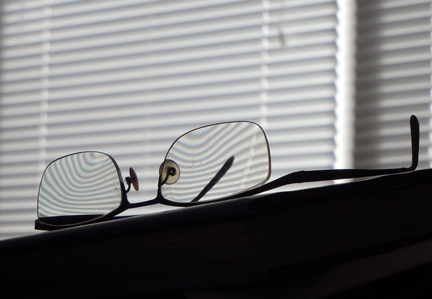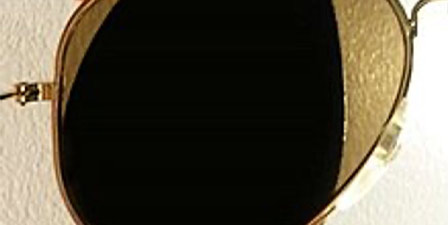
By Johnna Dukes, ABOC
In today’s market, there’s so much talk about capture rates, new patient acquisition costs, and, Oh My Gosh, what if they (gasp) shop online. I know it is a scary time in a jittery market, but I have a few tips that might take some of the pressure of finding new patients off you and your marketing team.
Make Your Office a Commodity Free Zone
When we look at glasses and contact lenses as commodities, we lose sight of the opportunity to really make the process personal to our patients. This is difficult in a marketplace where patients have been taught to look at things in a price comparative way. They’ve been coached to think that opticians are trying to scam them. If you think about it, patients turn on the TV and they hear advertising that says, “You paid too much for your eyewear.” This creates a natural distrust of our motives and our professionalism. This is a race to the bottom, and nobody wins that game. So, if our industry is only about providing the absolute lowest price and not having the discussion of value or personalization, I feel we are shortchanging our patients and not giving them the opportunity to make the best decision.
By having the same products that exist down the street at another practice, you open yourself up to having a pricing war and this creates commodity mentality. If you take the time to differentiate your practice, choose private label frames, search out unique frame lines, and research your options when it comes to lens design, you take yourself right out of the race to the bottom by not participating in the race at all. If they can’t find what you offer elsewhere, and if what you offer has value to them, then price is no longer the issue.
At the heart of it is the fact that caring for people isn’t a commodity. Having an experience with a patient where you take the time to really listen to them and tailor solutions to their needs isn’t a commodity. This is a service. I like to think that when we take the time to get to know our patients and when we give them options and the reasoning behind our recommendations, it lets the patient know that you see them and their needs are important and that this isn’t a one-size-fits-all kind of endeavor.
Service is truly the conduit to not only good patient outcomes, but to creating that patient who goes beyond merely being satisfied to becoming a raving fan of your business. I truly believe in the saying, “If you want what you’ve never had, you have to do what you’ve never done.” In this instance, if you want patients to share the services you provide with their circle of influence, you have to be prepared to do what you haven’t done before and really take the time to cater to their needs. Listen and then listen harder. Give only recommendations based on their input, tell them why you’re choosing the lens you are choosing and let them know you don’t choose this lens for everyone. You see, patients (in general) have no idea that there is more than one progressive lens or even more than one lens design at all. They often believe that they all work the same and that every practice offers the same things. If we don’t take the time to dispel that rumor, it will persist. Provide the education necessary to set the record straight.
Eyewear. Tailored.
Have you considered variable corridor length selection when it comes to progressive lenses? Do you know when to choose one corridor length over another? Arming yourself with information on these products and providing that education to your patients will give you another tool to help you differentiate your practice from others. When you decide that each patient deserves a product tailored to their needs and then taking the time to determine how their visual needs will impact lens selection is something that not many other practices are doing, and it truly impacts how patients will interact with their new lenses. Imagine that a tailor measures an inseam, and then uses this measurement to create clothing for their client that fits perfectly. They don’t just assume everyone has the same inseam and only use one standard fit.
When might you consider use of these variable lengths? In my 20+ years in this industry here are a few pearls that I’ve gleaned. 1) High myopes generally don’t like to turn their eyes down within a lens. (In their single vision days, high myopes learned that their best vision is in the center of the lens, teaching them not to use the peripheral parts of the lens. High myopes tend to be head turners, not eye turners.) Shorter corridor length lenses traditionally work better for them. Myopes who can’t find the reading area in PAL’s build habits of taking off their glasses to read. Often this is due to their being “lost” in the intermediate zone of the PAL, so use of a shorter corridor lens may be helpful to these patients.
2) Shortening the corridor of a lens can create more peripheral distortion within the lens, so utilizing an extreme short corridor lens for someone with a lot of astigmatism may be counterintuitive as these patients usually experience greater peripheral distortion in PAL’s.
3) Determining what corridor length your patient is currently using will be helpful in troubleshooting many problems. For example, if a patient has been wearing a narrow frame and goes to a newer frame with a longer b-box measurement they may have trouble navigating their new PAL. Likely this is due to them having been used to a shorter corridor PAL and they are now in a standard corridor. Usually this patient presents not by saying the corridor length is different, but that they can’t seem to find the right place within the lens to see what they’re trying to see.
Truly, I could go on and on, but my hope is that you will understand that creating an experience where you listen to your patient’s input and create a solution based on their input and Rx needs creates successful patient outcomes. Using one-size-fits-all lenses doesn’t create the tailoring that your patient expects and deserves, and paying attention to these little details can potentially help turn your patients into raving fans who will promote your business, say good things about your business, and recommend you to their friends and families. In today’s business climate, you need every opportunity to differentiate yourself and to create value. Tailoring solutions makes sense and creates results.
Learn more about advancements in progressive lens design technologies with our CE, Designing a Better Visual Experience for the Progressive Lens Wearer, at 2020mag.com/ce. It’s free, courtesy of an educational grant from Hoya.













